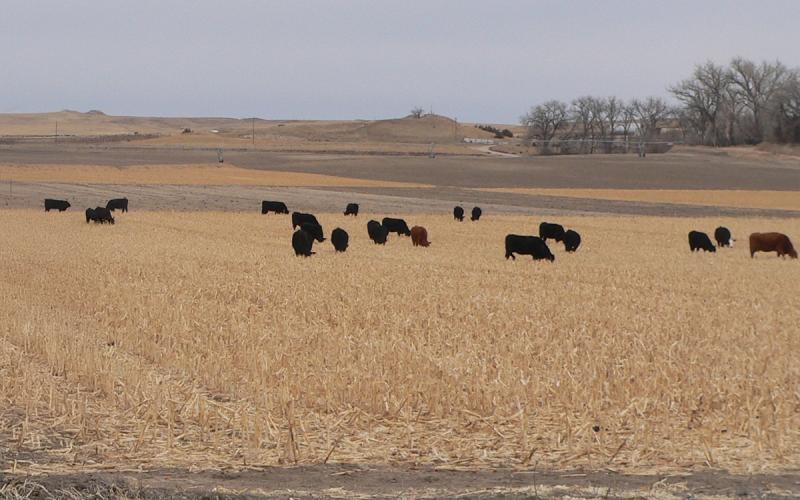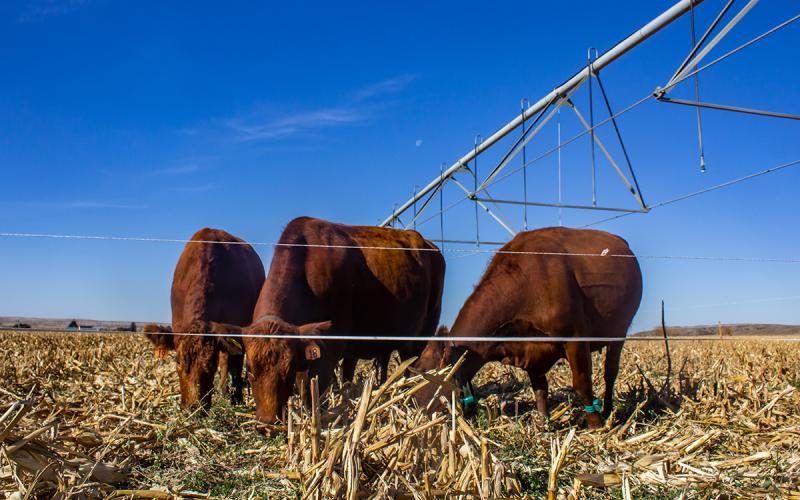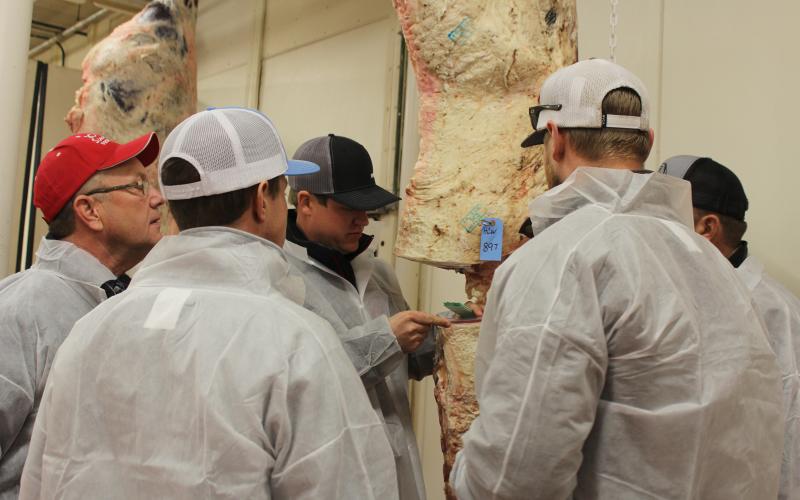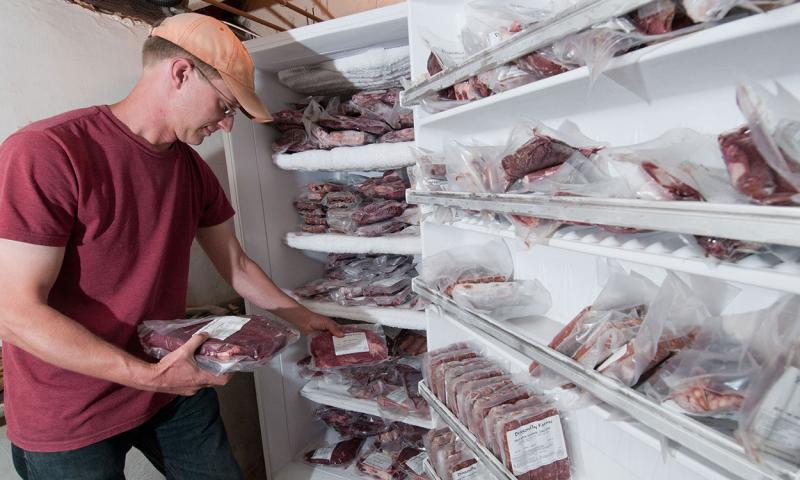
A trend that has become more prominent is for consumers to purchase beef, pork and lamb directly from farmers and ranchers. This can be in the form of direct sales of state-or-federally inspected meat or the sale of an animal to a customer or group of customers. Producers can sell live animals (whole animals, halves or quarters) to a customer, and the customer becomes the new owner and can then have that animal processed at a “custom-exempt” facility. Each package of meat will be stamped “Not For Sale,” indicating that it cannot be sold or donated to others. More information on inspection requirements can be found in the article, Meat Inspection in South Dakota: Requirements and Resources for Processing and Selling Meat. This article will focus on purchasing a beef animal, pig or lamb to stock your freezer.
Finding a Producer
There are several ways to connect with producers selling freezer beef, pork or lamb. If you know of a producer in your area that sells freezer meat, you can start by visiting with them. The South Dakota Specialty Producers Association provides an interactive map to assist consumers with locating various meat products and producers in the state. Another way to locate a producer is by contacting your local locker to ask about producers that offer animals for sale for freezer meat. The South Dakota Animal Industry Board maintains a list of state-inspected and custom-exempt establishments, so you can locate a processing facility close to you. Asking friends or family that have purchased freezer meat is a great way to gain contacts and learn about their experiences. There are also several social media groups dedicated to linking consumers with local meat producers, or you can begin by searching the web for producers in your area. Regardless of how you find a producer, it is important that you feel comfortable with them, with your purchase and with the process.
Before You Buy
A variety of factors may lead you to purchase directly from a producer. You may have an interest in purchasing local, a desire to know the source of your protein or an interest in a specific quality or credence attribute (grass-finished, exceptional marbling, specific breed, etc.). However, when purchasing freezer beef, most consumers expect an eating experience that would be as good or better than buying meat from retail. While individual preferences will dictate the type of meat you chose to purchase, it is important to communicate with the producer to ensure your expectations are met. To help ensure you are satisfied with your purchase there are a few details that are important to understand prior to purchasing.
Health
Herd health programs generally involve prevention of disease through vaccination and control of internal and external parasites. It is important to note that vaccination and treatment with antibiotics are not the same thing. Vaccinations are given to animals to prevent diseases. However, when animals do become sick, it is important to utilize antibiotics as appropriate to restore health.
Antibiotics are a component of good animal husbandry. Animals that are treated with antibiotics and harvested after the appropriate withdrawal time can be marketed as freezer meat, but they should not carry an antibiotic-free claim. More information about the safety and use of antibiotics in food animals can be found in this resource.
In cattle, hormones are often administered to promote growth by complementing the effects of naturally occurring hormones. The improvement in growth rate created by hormone implants allows for cattle to be finished earlier, thereby requiring less time on feed and fewer resources per pound of meat produced. If you are seeking beef raised without added hormones, it is important to ask the producer about their protocols. More information about the use and safety of hormones in beef can be found in the article, Hormones in Beef: Myths vs. Facts.
Animal Age
Older animals tend to producer tougher, darker-colored meat that is less desirable for whole muscle cuts, such as steaks, chops or roasts. While there can be a market for older animals for use in ground or processed meat products, it is not recommended to purchase older animals as freezer beef for traditional steaks, chops and roasts.
Diet
The type of finishing ration can also impact palatability. Variation in finishing methods is more common in beef and lamb finished on grain or grass. While there is room for both grass and grain-finished in the marketplace, it is important to understand the differences that should be expected. For example, in beef, the typical U.S. beef consumer is accustomed to the flavor profile and palatability attributes of grain-finished beef. Beef from grass-finished animals may be identified as having a grassy flavor and can have a different cooking odor compared with grain-finished beef. Also, consumers may note a difference in the visual appearance, as the fat of grass-finished beef can be more yellow in color. Grass-finished beef cattle are also generally finished at a lighter weight than grain-finished beef and, as a result, are often leaner with less marbling (intramuscular fat).
Communication
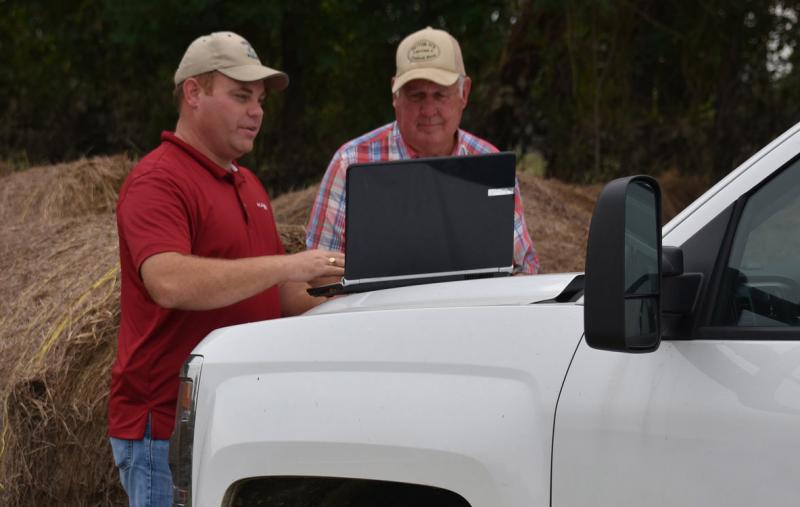
When purchasing freezer meat, it is important as a customer to establish good communication with both the producer and the processor.
Producer
- Make sure to communicate with the producer to ensure that you understand the estimated animal weight, animal cost (price per pound), the location of the processor, contact information for the processor and expected processing dates.
Processor
- You’ll need to communicate with the processor to ensure that you understand the processing costs, harvest and processing dates, how long the meat will be aged (this is the time the carcass is held in the cooler to allow for tenderization; typically, a few days to up to a few weeks depending on the species) and how you want your meat cut.
- An aspect of purchasing freezer beef, pork or lamb is determining the type and size of cuts desired. Most processors will provide a cutting form, where you can specify the cuts you want, steak or chop thickness and package quantities. If you are a new customer or unsure how to make these decisions, it is recommended to discuss these preferences with the producer, processor or someone you know with experience purchasing freezer meat. It is also recommended to pick up your meat promptly when it is ready to help processors avoid overcrowding in their freezers.
How Much Meat to Expect
Typically, if you’re purchasing from a producer, they should be able to estimate the final live weight of the animal. This is important for two reasons:
- It allows you to estimate the purchase price of the animal (paid to the producer) and the associated processing costs (paid to the processor).
- It allows you to know how much meat to expect to put in your freezer. The graphics below help to illustrate the approximate carcass weight you can expect from beef, pork, and lamb based on the average dressing percentage of each specie. When an animal is harvested, certain parts of the animal, such as the head, hide, feet, blood and internal organs, are removed. The remaining meat, fat and bone makes up the hanging weight of the carcass. Calculating dressing percentage helps to estimate the carcass yield from the live animal.
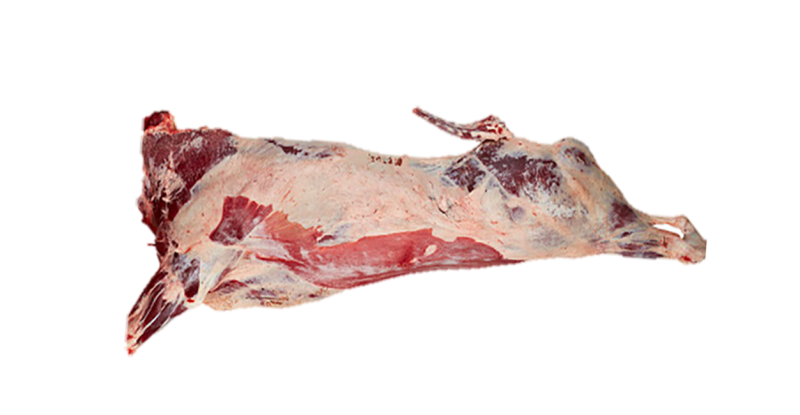
Beef
The average dressing percentage for young beef is about 60–63%.
The average finished weight is 1,200–1,500 pounds.
Example:
- Live weight = 1,350 pounds
- Dressing % = 62%
- Carcass weight = 837 pounds
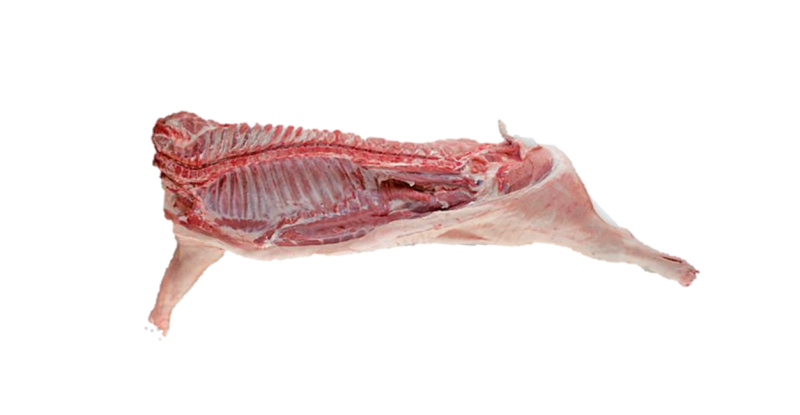
Pork
The average dressing percentage for finished hogs is about 70–76%.
The average finished weight is 250–290 pounds.
Example:
- Live weight = 270 pounds
- Dressing % = 73%
- Carcass weight = 197 pounds

Lamb
The average dressing percentage for finished sheep is about 50%.
The average finished weight is 125–150 pounds.
Example:
- Live weight = 140 pounds
- Dressing % = 50%
- Carcass weight = 70 pounds
Additional weight is lost when a carcass is fabricated, or broken down, into retail cuts. The percentage of carcass weight remaining as “take-home” product is called the cut yield and is approximately 65% of the carcass weight. However, the amount of “take-home” product can vary quite a bit based on how much fat is trimmed off the carcass, the specific cuts requested, or the amount of bone-in versus boneless retail cuts requested. This infographic from the University of Minnesota is useful for visualizing the amount of meat to expect from a quarter of beef, a half a hog or a whole lamb.
Storing and Thawing Frozen Meat
How much freezer space is needed?
If you are new to purchasing freezer beef, pork or lamb, it can be challenging to estimate the volume of meat you will be receiving or the amount of freezer space that will be required. The general rule is one cubic foot per 35–40 pounds of packaged meat. Additional space is needed when storing large or odd-shaped cuts. This infographic from the University of Minnesota is useful for visualizing the amount of freezer space needed for a quarter of beef, a half a hog or a whole lamb.
How long can meat be frozen?
If meat remains frozen at zero degrees Fahrenheit, it should remain safe indefinitely. However, quality (flavor, texture, etc.) can begin to deteriorate over time. This can occur more quickly for ground products (three-to-four months) compared to steaks, chops or roasts (12 months). However, I have personally had ground product frozen for over a year with minimal change in quality.
Thawing frozen meat
Most consumers are more familiar with handling fresh meat, so handling and thawing frozen meat may be a new experience. The best way to thaw frozen meat is to put it on a plate or tray on the lowest rack of the refrigerator. With this method, meat products can take anywhere from one-to-four days to thaw, depending on the thickness, so it definitely takes some preplanning. If you are short of time, another method to thaw meat is to place it in a sealed plastic bag and place it under cold running water. If you are really in a time crunch, you can always defrost meat in the microwave, but this can begin to cook the meat, so you might start sacrificing the quality of your eating experience. It is not recommended to thaw frozen meat out on a counter at room temperature. This could expose the product to the temperature danger zone (40–140 degrees Fahrenheit) for a long enough time period to allow for bacteria to grow and potentially cause foodborne illness.
